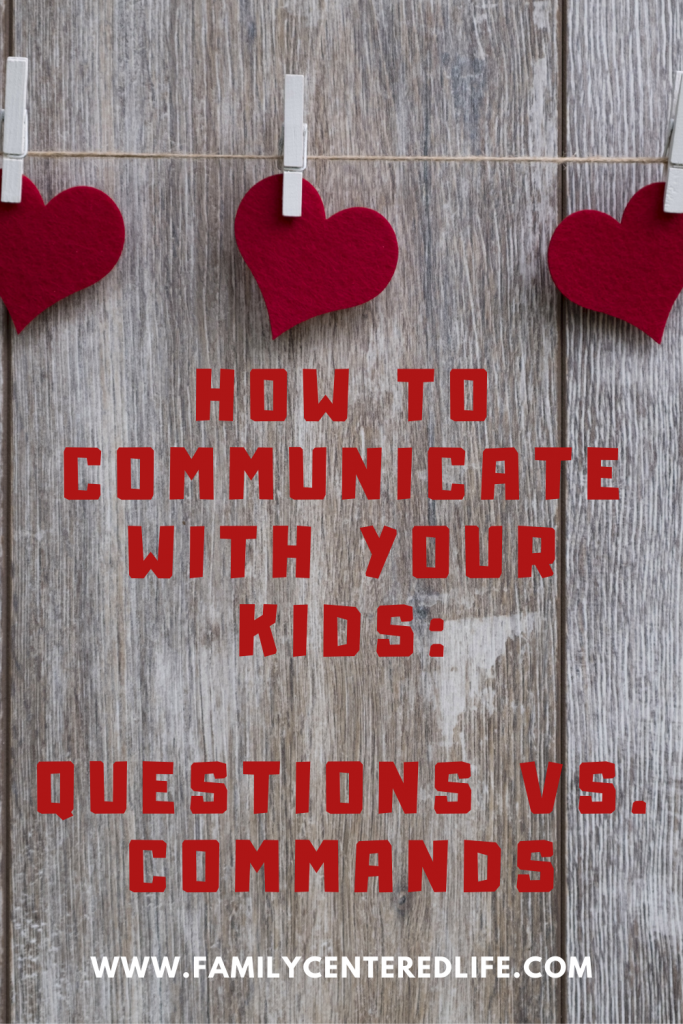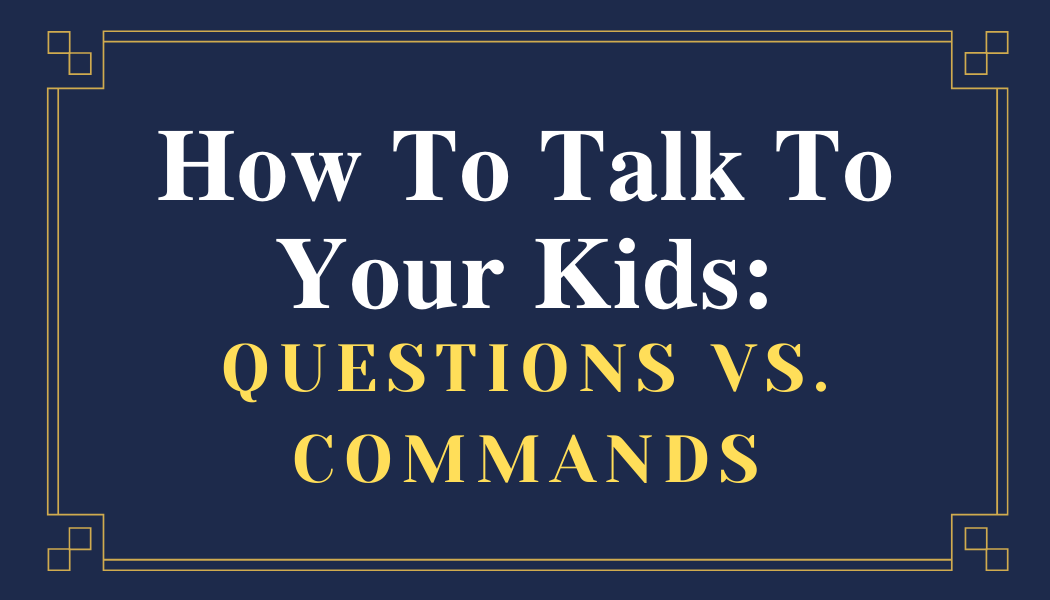All parents have times when their children refuse to comply with their requests. Sometimes it’s a flat-out “no” or sometimes they say “yes” but never quite get around to doing whatever it is they were asked to do. Other times children have all-out tantrums after being asked to do something they may not want to do.

Then, there are other occasions when children seem to give us the wrong answers when we ask something from them. For example, if you were to ask your child if he wanted to take a bath when it was bath time and the child responded “no,” then he did not give the answer you wanted or expected.
However, part or most of the problem with this last situation is that the parent actually had a command for the child (“It’s time to take a bath”), but the comment was phrased in the form of a question (“Would you like to take a bath?”) These two situations may not seem to have a huge distinction, but there is actually a big difference between these two situations.

Communication is Key
The first part of understanding this struggle with question versus command is to realize that most parents have this same struggle. Even my own adult-age daughter with children of her own and working on a master’s degree in social work will, at times, ask her child a question when she really has a command to give the child. Luckily, she often catches herself as soon as this comes out of her mouth and changes her question to a statement, but not all parents are lucky enough to have the background and education to see what a difference this distinction makes.
Parents have to understand what a command communicates to the child compared to what a question communicates to the child. If you ask a question it is assumed, and rightfully so, that there is more than one correct answer. However, if whatever you are discussing only has one correct answer then you are actually giving a command and not asking a question. These types of situations can cause a great deal of frustration for the child, as well as for the parent. Parents often do not understand why the child is not doing what the parent wants the child to do when the parent asks a question rather than giving a statement.

Consider the following examples:
Example #1:
Mom: Would you like to set the table?
Child: No
Mom: Set the table!
Child: But you just asked if I wanted to do it or not and I don’t want to
Mom: SET THE TABLE! Why do I always have to repeat myself?
(Child huffs and sets the table)
Example #2:
Mom: Set the table, please
Child: Ok
(Child sets the table)
Example #3:
Mom: Would you like to set the table now or in five minutes?
Child: I will do it in five minutes
Mom: ok
(five minutes pass)
Mom: It’s been five minutes. Set the table now, please.
Child: ok
(Child sets the table)
Now, by no means do all interactions between parents, children, and chores go quite this smoothly, but it illustrates the difference in a statement vs a question when you only expect one answer. Example #3 is a command “Would you like to set the table now or in five minutes,” but it gives the child a choice and both choices are acceptable for the parent “now or in five minutes.” If we are going to ask a question more than one answer needs to be correct. Otherwise, a statement or command is the more appropriate and more clear way to get your point across.
Open-ended vs Close-ended Questions
Since we are already discussing asking questions, it is also important to consider open-ended questions versus close-ended questions. An open-ended question is a question where pretty much any answer is possible. For example, what is your favorite color or what restaurant would you like to eat at. Close-ended questions are questions that give you a choice to make from a specific, limited number of options available to you. For example, do you want to wear a red shirt or a blue shirt or do you want an apple or an orange for a snack?
It is good to give kids choices whenever possible. This teaches children to make choices and allows them to have some independence, even if it is only small choices such as whether to wear a red shirt or blue shirt. However, make sure you are giving choices when a choice is really an option. Otherwise, you are setting the child up for failure if he or she does not give you the answer you desire.
If you are interested in more parenting skills, check out my ebook, How Many Times Do I Have To Repeat Myself?
It’s now available on Amazon in paperback and for Kindle!! Check it out with the link below!

TAKEAWAYS
- Give choices whenever possible, even small choices
- Don’t give a child a choice when there is no choice available
- If there is not really a choice, give a command or statement rather than ask a question
- Use open-ended questions when any answer would be acceptable
- Use close-ended questions when you have a limited number of options that are available for the specific choice
- All of this works with adults as well as with kids!
For more great tips, check out my parenting book!
Check out more great parenting tips and tricks HERE:




